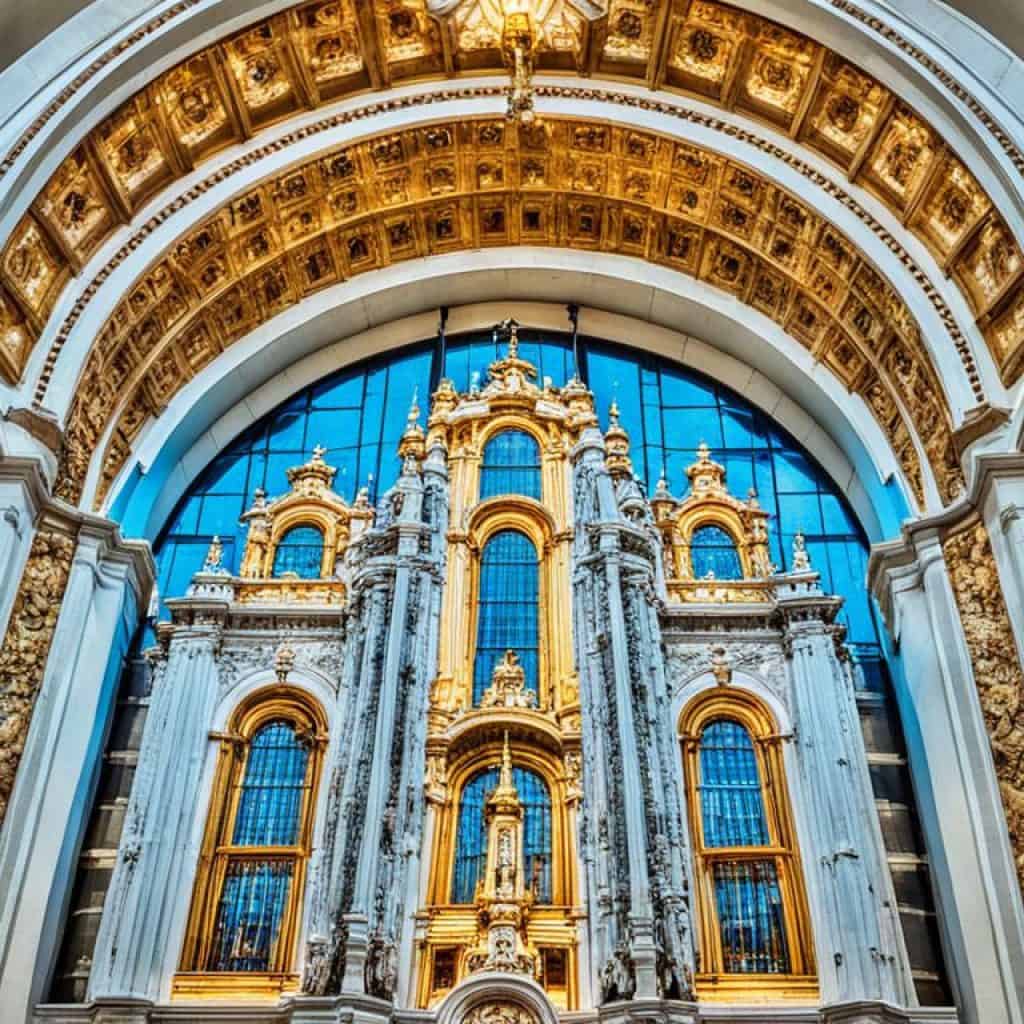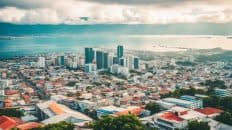Cebu, also known as Sugbo in the Visayan language, has a fascinating history that is deeply rooted in Filipino heritage. Have you ever wondered what Sugbo really means and where it comes from?
Let’s take a dive into the origins of Sugbo and uncover the cultural significance it holds in the region.
The word “sugbo” is believed to have originated from a Proto-Philippine term *sug(e)bu, which translates to “to bathe” or “to wade into water.” Over time, it evolved in the Cebuano language to mean “to dive into water.” What’s interesting is that this word is also found in other Philippine languages such as Tagalog and Hiligaynon.
The name “Cebu” itself is a modern variation of “sugbo” and was likely how the first Europeans heard the name when they arrived in the 16th-17th centuries. The exact origin of the word and its etymology in the Visayan language is still debated, but one thing is clear – “sugbo” has deep roots in the historical and cultural heritage of Cebu.
Key Takeaways:
- The word “sugbo” originated from a Proto-Philippine term that means “to bathe” or “to wade into water.”
- In the Cebuano language, “sugbo” evolved to mean “to dive into water.”
- The name “Cebu” is a modern variation of “sugbo” and has been used since the arrival of the first Europeans.
- The exact origin and etymology of “sugbo” in the Visayan language are still debated.
- “Sugbo” holds deep cultural and historical significance in Cebu’s heritage.
The Province of Cebu: A Gateway to a Thousand Journeys
Cebu is a province located in the Central Visayas region of the Philippines. It consists of a main island and 167 surrounding islands and islets. The capital and largest city of Cebu is Cebu City, often referred to as the “Queen City of the South.”
Cebu is known as the “Gateway to a Thousand Journeys” due to its central location and its role as a hub for tourism, commerce, and industry in the Visayas. As part of the region of Central Visayas, Cebu is one of the most developed provinces in the Philippines, offering a vibrant and diverse experience for visitors.
“Cebu is a destination where the past and present blend seamlessly, inviting travelers to explore its rich heritage, natural beauty, and vibrant culture.”
Central Visayas: Exploring the Island Group
The Visayas region, where Cebu is located, is one of the three island groups in the Philippines, alongside Luzon and Mindanao. This region is known for its stunning landscapes, pristine beaches, and warm hospitality. As visitors explore the province of Cebu, they are greeted with breathtaking scenery and a welcoming atmosphere.
A Thriving Province in Central Visayas
The province of Cebu is not only known for its natural beauty but also for its economic growth and development. It boasts a robust economy, driven by various industries such as manufacturing, information technology, and tourism. Cebu City, the capital, is a major center for business and commerce, attracting local and international investors.
With its strategic location and excellent infrastructure, Cebu has become a significant player in the global market. The province’s economic progress has led to improved quality of life for its residents and a wide range of opportunities for visitors.
Discovering the Cultural Treasures of Cebu
Cebu is a melting pot of cultures, influenced by its rich history and diverse population. The province celebrates its cultural heritage through various festivals, traditions, and artistic expressions. Visitors have the opportunity to immerse themselves in the vibrant Cebuano culture, witnessing traditional dances, music performances, and culinary delights.
One of the most famous festivals in Cebu is the Sinulog Festival, held annually in January. It is a vibrant and colorful celebration that pays homage to the Santo Niño, the patron saint of Cebu. The festival features a grand parade with dancers dressed in elaborate costumes, showcasing the province’s rich cultural heritage.
Exploring Cebu’s Natural Wonders
Aside from its cultural treasures, Cebu is also home to stunning natural attractions. The province boasts pristine beaches, crystal-clear waters, and lush mountains, offering diverse opportunities for outdoor activities and adventures.
Adventurous souls can hike through Cebu’s majestic mountains, explore hidden waterfalls, or dive into the vibrant underwater world. From the picturesque landscapes of Moalboal and Oslob to the towering peaks of Osmena Peak and Sirao Peak, Cebu’s natural wonders never fail to leave a lasting impression.
Top Attractions in Cebu
| Attraction | Description |
|---|---|
| Magellan’s Cross | A historical religious landmark in Cebu City, symbolizing the arrival of Christianity in the Philippines. |
| Moalboal | An idyllic beach and diving destination known for its vibrant coral reefs and marine life. |
| Kawasan Falls | A stunning three-tiered waterfall in the town of Badian, perfect for swimming and canyoneering. |
| Oslob | Famous for its whale shark watching, where visitors can swim with these majestic creatures. |
| Tops Lookout | A scenic viewpoint in Cebu City that offers panoramic views of the cityscape and surrounding mountains. |
With its rich culture, breathtaking landscapes, and welcoming locals, Cebu truly lives up to its reputation as a gateway to unforgettable journeys. Whether you’re seeking adventure, cultural immersion, or relaxation, this province in Central Visayas offers a wealth of experiences for every traveler.
Experience the wonders of Cebu Province: a destination that seamlessly combines natural beauty, cultural heritage, and warm Filipino hospitality.
Historical Significance of Cebu: A Look Back in Time
Cebu has a rich historical significance, steeped in the annals of Cebu history and the impact of Spanish colonization. Before the arrival of the Spaniards, Cebu was the seat of the Cebu Rajahnate, a native kingdom founded by Sri Lumay, a prince of the Chola dynasty. This early civilization laid the foundation for Cebu’s cultural heritage.
However, the arrival of Portuguese explorer Ferdinand Magellan in 1521 marked a turning point in Cebu’s history. Magellan’s expedition kicked off Spanish exploration and colonization in the Philippines, with Cebu being one of the first areas encountered. The Battle of Mactan, fought on Cebu’s shores, represents a poignant moment of resistance as the native Lapu-Lapu and his warriors successfully repelled the Spanish forces, resulting in Magellan’s death.
The Battle of Mactan represents the spirit of the Cebuano people, showcasing their resistance against foreign occupation. Despite Magellan’s death, the Spanish did return to Cebu and eventually established their presence, leading to the Spanish Colonial Period in the Philippines.
During the Spanish Colonial Period, Cebu became a center for Spanish exploration and colonization. The Spanish authorities transformed Cebu into a strategic base for further expeditions and the spread of Christianity. The colonial era left a lasting impact on Cebu, shaping its culture, religion, and architecture, which can still be observed in its historical landmarks today.
Through the spanish colonization, they introduced Catholicism, leaving a significant imprint on the religious landscape of Cebu. The presence of Spanish architecture and religious structures, such as Cebu’s iconic Magellan’s Cross and the Basilica del Sto. Niño, stands as a testament to this period of history. These historical landmarks represent both the cultural and religious heritage that was established during the Spanish Colonial Period.
Despite the challenges faced during colonization, Cebu’s rich history and the legacy of its indigenous people endure. The historical significance of Cebu provides a captivating narrative of bravery, resilience, and cultural evolution that resonates to this day.
Cebu City: A Melting Pot of Culture and Heritage
Cebu City, the capital of Cebu, is a vibrant destination that showcases the rich history and cultural significance of the province. With its diverse heritage and historical gems, the city offers a captivating experience for visitors from around the world.
One of the notable landmarks in Cebu City is Magellan’s Cross, a symbolic representation of the introduction of Christianity to the Philippines. It is believed to have been planted by Ferdinand Magellan himself in 1521, marking the start of a new era in the country’s religious landscape.
The Basilica del Sto. Niño, a 16th-century structure, is another iconic landmark in Cebu City. It is home to the revered Santo Niño statue, a symbol of the Christianization of the Philippines. The basilica attracts pilgrims and visitors who seek spiritual solace and admire its architectural grandeur.
| Landmark | Description |
|---|---|
| The Heritage of Cebu Monument | A tribute to Cebu’s history, featuring sculptures depicting significant events and figures |
| Yap Sandiego Ancestral House | A well-preserved ancestral house showcasing the Filipino-Chinese heritage and culture |
| Jesuit House of 1730 or Museo de Parian | An architectural gem that offers insights into Cebu’s colonial history and Filipino-Chinese influences |
| Casa Gorordo Museum | A living museum that provides a glimpse into the Cebuano way of life during the colonial period |
| Fort San Pedro | A Spanish-era fort that played a crucial role in defending Cebu against foreign invasions |
| Museo Sugbo | A former provincial jail turned museum, housing artifacts that reflect Cebu’s rich history |
These historical landmarks, along with numerous other cultural sites, offer a journey back in time and provide insights into the Cebuano lifestyle, traditions, and history. Whether exploring the grandeur of centuries-old architecture, marveling at intricate sculptures, or immersing oneself in the vibrant artistic expressions of the past, Cebu City is a haven for history enthusiasts and cultural explorers.
Exploring Cebu City’s cultural and historical gems is an enriching experience that allows visitors to appreciate the depth of Cebu’s heritage. From the religious significance of Magellan’s Cross and the Basilica del Sto. Niño to the architectural and cultural wonders of The Heritage of Cebu Monument, Yap Sandiego Ancestral House, Jesuit House of 1730 or Museo de Parian, Casa Gorordo Museum, Fort San Pedro, and Museo Sugbo, each landmark tells a unique story of Cebu’s past.
As the city embraces modernity while preserving its cultural roots, Cebu City continues to be a remarkable destination that celebrates both its history and its vibrant present. Visitors can immerse themselves in the rich tapestry of Cebu’s culture and heritage, forging lasting memories and a deeper understanding of this captivating city.
Experience Cebu’s Cultural Extravaganza: Gabii sa Kabilin
Get ready for a night of cultural immersion and celebration in Cebu City with Gabii sa Kabilin, also known as the “Night of Heritage.” This annual event is a true testament to the richness and diversity of Cebu’s cultural heritage.
Gabii sa Kabilin offers a unique opportunity to experience the vibrant traditions and customs of Cebu through a variety of activities. From cultural presentations to indoor and outdoor exhibits, this event showcases the best of Cebu’s cultural institutions and partner museums.
Step into the past as you visit historical heritage sites and discover the fascinating stories behind them. Delve into the exhibits that highlight the preservation of heritage in Cebu, and be captivated by the cultural activities that add vibrancy to the night.
Test your skills and creativity by participating in contests that showcase local talent and promote cultural expression. And don’t miss the food bazaars, where you can indulge in delectable treats and savor the flavors of Cebu’s gastronomic delights.
“Gabii sa Kabilin is a celebration of our rich history and cultural heritage. It allows us to appreciate and preserve our traditions, ensuring that future generations will continue to embrace the beauty of our heritage,” says John Santos, Event Director.
Organized by the Ramon Aboitiz Foundation Inc. in partnership with local cultural institutions and the Cebu City Government, Gabii sa Kabilin is a night to remember. It takes place every year, usually in May, to coincide with the celebration of Philippine Independence. The event serves as a reminder of the importance of preserving our heritage and passing it on to future generations.
So mark your calendars and be prepared to be immersed in the cultural extravaganza of Gabii sa Kabilin. Experience the vibrant traditions, explore heritage sites, and engage in cultural activities that showcase the best of Cebu’s cultural richness. It’s a night you won’t want to miss!
The Historic Basilica Minore del Santo Niño
The Basilica Minore del Santo Niño is a magnificent 16th-century structure located in the heart of Cebu City, Philippines. It holds immense religious significance and serves as a symbol of the Christianization of the Philippines. This historic basilica is revered by Catholics and visitors alike for its captivating architecture and rich cultural heritage.
At the heart of the Basilica Minore del Santo Niño lies the esteemed Santo Niño statue. Legend has it that this revered statue was a gift from Ferdinand Magellan to Queen Juana during the early years of the Spanish colonization in the 16th century. The statue represents the infant Jesus and holds deep religious significance, symbolizing the Christian faith that took root during the country’s early history.
Throughout the year, the Basilica Minore del Santo Niño attracts pilgrims and tourists from all over the world. It is particularly renowned for hosting the Sinulog Festival, an annual event that honors the Santo Niño statue and celebrates the vibrant spirit of the Cebuano people. This festival is a time of colorful processions, traditional dances, and joyful celebrations that showcase the deep-rooted faith and cultural heritage of the region.
Stepping into the basilica, visitors are greeted by its awe-inspiring interior adorned with intricate woodwork and ornate gold accents. The holy ambiance and the grandeur of the architecture create a serene atmosphere for prayer and reflection. The Basilica Minore del Santo Niño is not only a place of worship but also a cherished symbol of Cebu’s spiritual identity.
For anyone seeking to delve into the rich history and cultural heritage of Cebu, a visit to the Basilica Minore del Santo Niño is a must. It offers a captivating glimpse into the region’s past, its religious significance, and the enduring influence of Roman Catholicism on the Filipino people.

Annual Festivals at the Basilica Minore del Santo Niño
The Basilica Minore del Santo Niño is at the center of various annual festivals that draw crowds of devotees and revelers each year. Here are some of the most notable festivals celebrated at the basilica:
- Sinulog Festival: This world-renowned festival is held every January in honor of the Santo Niño. It features a grand parade with participants dressed in vibrant costumes, dancing to traditional beats and chanting praises to the Santo Niño. The Sinulog Festival is a dazzling spectacle that captures the essence of Cebuano culture and spirituality.
- Fiesta Señor: This religious festival occurs in January and is a month-long celebration dedicated to the Santo Niño. It includes novenas, processions, and mass gatherings where devotees express their devotion and gratitude to the Santo Niño.
- Palm Sunday Procession: The Palm Sunday Procession takes place annually before Holy Week, symbolizing the triumphant entry of Jesus into Jerusalem. Thousands of faithful Catholics join the procession, holding palm fronds and following the Santo Niño statue.
These annual festivals not only attract religious pilgrims but also provide an opportunity for locals and tourists to immerse themselves in Cebuano culture, witness traditional dances and music, indulge in local delicacies, and experience the vibrant atmosphere of the Basilica Minore del Santo Niño.
The Influence of Roman Catholicism in the Philippines
“Roman Catholicism has played a pivotal role in shaping the religious and cultural landscape of the Philippines. The Basilica Minore del Santo Niño stands as a testament to the enduring faith of the Filipino people and the rich history of Roman Catholicism in the country.”
The introduction of Christianity to the Philippines through Spanish colonization in the 16th century had a profound impact on the country’s religious beliefs and practices. Roman Catholicism became deeply rooted in Philippine society, with the Basilica Minore del Santo Niño serving as a prominent symbol of this faith.
Today, the Basilica Minore del Santo Niño stands as a cherished pilgrimage site for Catholics and a testament to the enduring spiritual heritage of the Philippines. It continues to inspire deep devotion and serve as a place of solace and prayer for those seeking spiritual nourishment.
In Summary
The Basilica Minore del Santo Niño is a captivating treasure in Cebu City, Philippines. This historic 16th-century structure, with its religious significance and annual festivals, offers an immersive experience into the vibrant culture and rich spiritual heritage of the region. Its grandeur, coupled with the Santo Niño statue and its association with the Christianization of the Philippines, make it a cherished destination for pilgrims and tourists alike. A visit to the Basilica Minore del Santo Niño is an opportunity to appreciate the depth of Cebu’s history, its enduring faith, and the influence of Roman Catholicism in the country.
Magellan’s Cross: A Symbol of Christianization in the Philippines
Magellan’s Cross is an iconic symbol in the Philippines that commemorates the introduction of Christianity to the country. It holds great historical and religious significance and serves as a reminder of the enduring influence of Roman Catholicism in the Philippines.
The story behind Magellan’s Cross dates back to 1521 when the Portuguese explorer Ferdinand Magellan arrived in the Philippines. He was welcomed by the ruler of Cebu, Rajah Humabon, and his wife, Queen Juana. The couple, along with their followers, were baptized by Fr. Pedro Valderama in a significant event marking the beginning of Christianization in the Philippines.
Located in Cebu City, Magellan’s Cross marks the spot where this baptism took place. The cross is encased in a small chapel near the Basilica Minore del Santo Niño. It is housed in a structure made of tindalo wood, which protects it from the elements.
The cross itself is believed to be made from the original cross planted by Magellan upon his arrival, although some argue that it is a replica. Regardless of its authenticity, Magellan’s Cross remains a cherished symbol that represents the cultural and religious transformation brought about by the introduction of Christianity in the Philippines.
The Christianization of the Philippines had a profound impact on the country’s history and culture. It laid the foundation for the dominance of Roman Catholicism, which remains the predominant religion in the Philippines to this day. The arrival of Christianity brought about changes in religious practices, traditions, and the way of life of Filipinos, shaping the nation’s cultural landscape.
Magellan’s Cross stands as a testament to this rich history and the enduring faith of the Filipino people. It serves as a pilgrimage site for both locals and tourists, who visit to pay homage, offer prayers, and seek blessings. It is a powerful symbol that embodies the spiritual journey of the Filipino nation and the vital role played by Christianity in its development.
Magellan’s Cross is not only a historical landmark but also a tangible representation of the Philippines’ deep-rooted religious beliefs and the lasting influence of Roman Catholicism. It reminds us of the transformative power of faith and the role it plays in shaping the cultural identity of a nation.
| Magellan’s Cross | Introduction of Christianity | Baptism and Christianization | Roman Catholicism |
|---|---|---|---|
| Commemorates the introduction of Christianity to the Philippines | Symbolizes the baptism of Rajah Humabon, Queen Juana, and their followers by Fr. Pedro Valderama | Signifies the beginning of Christianization in the Philippines | Reflects the enduring influence of Roman Catholicism in the country |
The Historical Significance of Magellan’s Cross
“Magellan’s Cross is a powerful symbol that represents the cultural and religious transformation brought about by the introduction of Christianity in the Philippines.”
The historical significance of Magellan’s Cross cannot be overstated. It marks a pivotal moment in Philippine history, a testament to the country’s complex colonial past and its enduring faith. The cross stands as a tangible connection to the events that shaped the cultural and religious landscape of the Philippines, reminding us of the rich heritage and deep spirituality that define the nation.
Yap San Diego Ancestral House: A Window into Cebu’s History
The Yap San Diego Ancestral House stands as a historic landmark that provides visitors with a unique glimpse into Cebu’s rich history and cultural heritage. This architectural gem, dating back to the late 17th century, showcases a remarkable blend of Filipino and Chinese influences, reflecting the region’s diverse cultural tapestry.
Stepping inside the Yap San Diego Ancestral House is like taking a journey back in time. The house is adorned with an impressive collection of historical artifacts, including vintage furniture and artworks that vividly depict the Cebuano way of life during the colonial era.
As you explore each room, you’ll have the opportunity to discover the unique cultural blend that emerged from the Filipino-Chinese community’s presence in Cebu. The exquisite craftsmanship and intricate design details found throughout the house are a testament to the rich heritage of these communities and their contributions to Cebu’s development.
The Yap San Diego Ancestral House serves as a window into the past, revealing the cultural exchange and fusion that took place during the colonial era. It allows visitors to gain a deeper understanding of the historical and societal context that shaped Cebu’s identity.
Whether you’re a history enthusiast, a culture lover, or simply curious about the fascinating stories behind Cebu’s heritage, a visit to the Yap San Diego Ancestral House is an unforgettable experience that offers a unique perspective on the region’s vibrant history.
Jesuit House of 1730 (Museo de Parian): A Living Testament to Cebu’s Colonial History
The Jesuit House of 1730, also known as Museo de Parian, is a well-preserved architectural gem that stands as a testament to Cebu’s colonial history. Built in 1730, this house showcases the resilience of Cebu’s construction techniques, featuring coral stones and wood that have withstood the test of time and earthquakes.
Step inside the museum and be transported to the past. Immerse yourself in the rich historical artifacts and antique furniture that adorn this colonial treasure. Discover religious statues that reflect the deep spirituality of the Cebuano people during that era.
The Jesuit House of 1730 offers a window into the Cebuano way of life, showcasing the influences of indigenous art and the Filipino-Chinese community. As you explore the museum, you’ll gain a deeper understanding of the colonial legacy that shaped the region and discover the antique furniture that adorned the homes of the Cebuano elite.
The Jesuit House of 1730, Museo de Parian, is a living testament to Cebu’s colonial history. It is a treasure trove of historical artifacts, indigenous art, and antique furniture that offer a glimpse into the Cebuano way of life during that era.
Visit the Jesuit House of 1730 and embrace the opportunity to delve into the rich history and cultural heritage of Cebu. Experience the authenticity of this historical landmark and witness the beauty of a bygone era.
The Natural Splendor of Cebu: Sirao Peak and Mt. Manunggal
Cebu is renowned not only for its rich cultural heritage but also for its abundant natural wonders. Among the top attractions are Sirao Peak and Mt. Manunggal, offering exceptional experiences for outdoor enthusiasts and adventure seekers.
Sirao Peak is a popular hiking trail that provides hikers with breathtaking panoramic views of Cebu City and the surrounding mountains. As you trek to the summit of Sirao Peak, you’ll be rewarded with scenic vistas that showcase the awe-inspiring beauty of Cebu’s landscapes.
“Cebu’s Sirao Peak offers hikers an immersive journey through its lush greenery and stunning vistas. The trail not only tests your physical endurance but also provides an opportunity to connect with nature and soak in the scenic views.” – Experienced Hiker
Mt. Manunggal, on the other hand, holds historical significance in addition to its natural beauty. This is the site where the plane carrying President Ramon Magsaysay crashed in 1957, resulting in his unfortunate demise. Today, Mt. Manunggal serves as a memorial that attracts visitors who are interested in historical exploration.
Exploring these natural wonders in Cebu offers a chance to engage in outdoor activities, including hiking, trekking, and sightseeing. Whether you’re an adventure seeker or simply seeking solace in the beauty of nature, Sirao Peak and Mt. Manunggal are destinations that promise unforgettable experiences.

Immerse yourself in the lush greenery, breathtaking landscapes, and historical significance of Sirao Peak and Mt. Manunggal. Venture into these natural wonders and discover the hidden treasures that await you in the heart of Cebu.
Gastronomic Delights: Indulge in Cebu’s Culinary Offerings
Cebu, a haven for food lovers, beckons with its wide range of gastronomic offerings. One cannot visit this vibrant city without trying the legendary Cebu Lechon, a roasted pig renowned for its succulent meat and crispy skin. The streets of Cebu are lined with bustling street food markets, luring visitors with a wealth of local cuisine. Embark on a culinary adventure and explore the rich food culture of this city.
From traditional Filipino dishes to unique Cebuano specialties, Cebu’s culinary scene entices every palate. Taking a bite of local delicacies is like a journey through the vibrant flavors and diverse culinary traditions of the region. Indulge in mouthwatering seafood dishes, aromatic barbecue, and delectable street food.
Cebu’s street food markets offer a plethora of choices, showcasing the dynamic and diverse local cuisine. Stroll through the bustling stalls and savor mouthwatering skewers, savory pancakes, savory noodles, and refreshing tropical fruits. These markets are a feast for the senses, giving visitors a chance to immerse themselves in the lively atmosphere and sample a variety of flavors.
Whether you choose to dine in high-end restaurants, buzzing food stalls, or hole-in-the-wall eateries, Cebu’s culinary offerings will leave you craving for more. The city’s vibrant food culture is a reflection of its rich history and cultural influences, making every meal a culinary experience to remember.
Sample Menu
| Cuisine | Must-Try Dishes |
|---|---|
| Filipino | Sinigang (sour soup), Adobo (meat stew), Kare-Kare (ox tail stew) |
| Cebuano |
|
| Seafood | Grilled squid, Baked scallops, Kinilaw (ceviche) |
| Desserts | Mango float, Leche flan, Haluhalo |
With its gastronomic delights, Cebu offers a culinary journey that satisfies both adventurous eaters and connoisseurs alike. Indulge in the diverse flavors and vibrant food culture of this splendid city.
Vibrant Nightlife: Festivals and Events that Reflect Cebu’s Spirit
Cebu City comes alive at night with its vibrant nightlife and lively celebrations. The city is renowned for its energetic festivals and events that showcase the vibrant spirit of the Cebuanos and their deep-rooted traditions.
One of the most famous festivals in the Philippines is the Sinulog Festival. This colorful celebration features parades, street dances, and cultural performances that attract both locals and visitors. Through vibrant displays of music and dance, the Sinulog Festival embodies the contemporary zest of Cebu and serves as a testament to the rich cultural heritage of the region.
In addition to the Sinulog Festival, Cebu is home to various music events that add to its lively nightlife scene. The Vispop and Bisrock concerts, for example, showcase the city’s thriving music industry and provide an opportunity for locals and tourists alike to immerse themselves in the energetic rhythms of Cebu’s music scene.
These festivals and events not only offer entertainment but also foster a sense of community and pride. They create a space for people to come together and celebrate their cultural identity, creating unforgettable memories and experiences.
Experience the vibrant nightlife and join in the lively celebrations of Cebu City’s festivals and events. Immerse yourself in the vibrant spirit, embrace the cultural traditions, and revel in the contemporary zest that makes Cebu a truly remarkable destination.
Artistic Heritage: Intricate Crafts and Energetic Music
Cebu, known for its artistic heritage, is a thriving hub of creativity and cultural expression. The city boasts a long-standing tradition of skilled craftsmanship, particularly in the production of handcrafted guitars. Cebu’s guitar makers are renowned for their meticulous attention to detail and their ability to create high-quality instruments that are sought after by musicians worldwide. These handcrafted guitars are not only musical instruments but works of art, showcasing the exceptional talent and local craftsmanship that Cebu is known for.
But Cebu’s artistic heritage extends beyond guitar making. The city is also a hub for Vispop and Bisrock music, two genres that have gained popularity in recent years. Vispop, a portmanteau of “Visayan” and “pop,” features songs in the Visayan language that blend traditional elements with contemporary sounds. Bisrock, on the other hand, is a genre that fuses rock music with Bisayan lyrics, creating a unique and energetic musical style. Both genres showcase the vibrant and dynamic music industry in Cebu, attracting both local and international audiences.
These artistic endeavors in Cebu not only represent the city’s rich cultural heritage but also provide a platform for local artists to express themselves and share their talent with the world. From intricate handcrafted guitars to the energetic sounds of Vispop and Bisrock music, Cebu’s artistic heritage continues to evolve and flourish, contributing to the cultural landscape of the city and the wider music industry.
Handcrafted Guitars in Cebu
One of the highlights of Cebu’s artistic heritage is the production of handcrafted guitars. Made by skilled artisans, these guitars are meticulously crafted using traditional techniques passed down through generations. Each guitar is a labor of love, with every detail carefully considered to ensure exceptional sound and craftsmanship.
Vispop and Bisrock Music
Cebu’s music scene is known for its diverse genres, and two of the most prominent ones are Vispop and Bisrock. Vispop is characterized by its catchy melodies and heartfelt lyrics, often exploring themes of love, life, and culture. Bisrock, on the other hand, infuses rock elements with Bisayan lyrics, creating a powerful and energetic musical style that resonates with the local audience.
This unique blend of Vispop and Bisrock music reflects Cebu’s cultural identity and serves as a platform for local artists to express themselves. Through their music, these artists share stories, emotions, and perspectives that are deeply rooted in the local culture and experiences.
Overall, Cebu’s artistic heritage is a testament to the city’s vibrant and diverse creative scene. From the intricate craftsmanship of handcrafted guitars to the energetic sounds of Vispop and Bisrock music, Cebu continues to inspire and captivate artists and music enthusiasts alike.
| Artistic Heritage in Cebu | |
|---|---|
| Handcrafted guitars | A symbol of exceptional craftsmanship and musical artistry |
| Vispop music | A fusion of traditional and contemporary sounds in the Visayan language |
| Bisrock music | A unique genre that blends rock music with Bisayan lyrics |
| Local craftsmanship | An expression of Cebu’s talent and skill in various artistic endeavors |
| Cultural expression | A platform for local artists to showcase their creativity and share their stories |
| The music industry | A thriving and dynamic sector that contributes to Cebu’s artistic landscape |
Unforgettable Experiences: Exploring the Unique Blend of Cebu City
Exploring Cebu City offers unforgettable experiences that encompass its unique blend of historical essence and contemporary zest. From cultural immersion in historical sites and museums to adventures in natural wonders like Sirao Peak and Mt. Manunggal, Cebu has something for everyone. Indulging in gastronomic delights, experiencing the vibrant nightlife, and appreciating the city’s artistic heritage completes the diverse range of experiences that make Cebu City a top destination.
Immerse yourself in the cultural immersion of Cebu City by tracing its historical essence through visits to iconic landmarks and museums. Marvel at the grandeur of Magellan’s Cross and Basilica del Sto. Niño, which stand as testaments to the city’s rich history. Explore The Yap San Diego Ancestral House and Jesuit House of 1730 (Museo de Parian) to uncover the city’s colonial past and admire the intricate craftsmanship of a bygone era.
For nature enthusiasts, Cebu City offers breathtaking natural wonders that will leave you in awe. Embark on a hike to Sirao Peak and be rewarded with panoramic views of the city and its picturesque surroundings. Pay tribute to history at Mt. Manunggal, the site where President Ramon Magsaysay’s plane crashed, while enjoying the beauty of nature and the tranquil ambiance of the area.
“Cebu City is a melting pot of history, culture, and adventure. It seamlessly blends the historical essence of the past with the contemporary zest of the present, offering visitors a truly remarkable experience.”
No visit to Cebu City is complete without indulging in its gastronomic delights. Savor the world-famous Cebu Lechon, a succulent and crispy roasted pig that will tantalize your taste buds. Explore the vibrant street food markets and sample a variety of local cuisines, from savory delicacies to sweet treats. Cebu City’s food culture is a fusion of traditional flavors and modern culinary innovations, making it a paradise for food lovers.
As the sun sets, Cebu City comes alive with its vibrant nightlife. Immerse yourself in the energy and excitement of the city’s festivals and events, such as the Sinulog Festival, which showcases cultural performances and lively street dances. Experience the contemporary zest of Cebu City’s music scene by attending Vispop and Bisrock concerts, where you can groove to the beats of local talents and immerse yourself in the vibrant music culture.
Cebu City is also known for its artistic heritage. Discover the skilled craftsmanship of handcrafted guitars, a tradition that has been passed down through generations. Immerse yourself in the rich cultural expression of Cebu City’s music industry, where the unique blend of traditional and contemporary sounds creates a thriving artistic scene. Experience the passion and creativity of local artists, and witness firsthand the artistic heritage that defines the city.
Whether you are seeking cultural immersion, exploring natural wonders, indulging in gastronomic delights, or experiencing the vibrant nightlife and artistic heritage of Cebu City, the unique blend of historical essence and contemporary zest promises an unforgettable adventure. Discover the wonders of Cebu City and create memories that will last a lifetime.
Destination Cebu: A Place of History, Culture, and Natural Beauty
Cebu is a destination that offers a unique blend of rich history, diverse culture, and natural beauty. With its historical landmarks, such as Magellan’s Cross and Basilica del Sto. Niño, and cultural attractions like the Yap San Diego Ancestral House and Jesuit House of 1730, Cebu provides a glimpse into its past.
The natural beauty of Cebu, including scenic trails, breathtaking views, and vibrant festivals, adds to the allure of this top travel destination. Whether you are a history buff, culture enthusiast, or nature lover, Cebu has something to offer every traveler.
Conclusion
In conclusion, Cebu City is a top travel destination that offers a unique blend of cultural heritage, historical landmarks, natural attractions, gastronomic delights, vibrant nightlife, and artistic expression. The name “Cebu” itself, derived from its Sugbo meaning, holds a deep-rooted significance in Filipino heritage. From exploring the historical sites such as Magellan’s Cross and Basilica del Sto. Niño to immersing yourself in the vibrant festivals and events, Cebu City showcases its rich history and diverse culture.
But beyond its cultural allure, Cebu City also boasts natural beauty, with breathtaking views from Sirao Peak and opportunities for outdoor adventure at Mt. Manunggal. The local cuisine, including the famous Cebu Lechon and street food markets, offers a culinary experience that delights the taste buds. And when the sun sets, the city comes alive with its vibrant nightlife, offering music events and festivals like the Sinulog Festival that reflect the contemporary zest of Cebu.
Whether you are a history buff, a nature lover, a food enthusiast, or someone seeking artistic expression, Cebu City is the perfect destination. It combines the best of Filipino heritage with a modern flair, making it an unforgettable travel experience. So, pack your bags, explore Cebu City, and immerse yourself in its rich cultural tapestry and natural wonders. Discover why it is truly one of the top travel destinations in the Philippines.


















Add comment